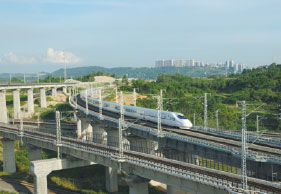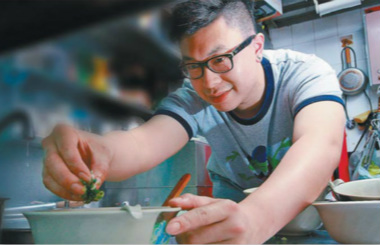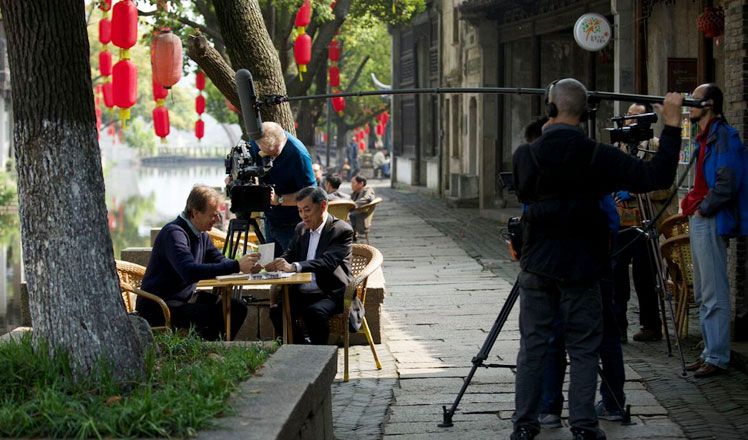Guangxi boosts ASEAN trade
Updated: 2016-01-13 08:22
By Huo Yan in Nanning(China Daily)
|
|||||||||||
|
The countryside in Luzhai county, Liuzhou city in the Guangxi Zhuang autonomous region has become a new tourist attraction. Photos Provided to China Daily |
Editor's Note: The Guangxi Zhuang autonomous region, which has a long history of contact with Southeast Asia, thanks to its affinity in language, culture and customs, is set to become China's pathway to the Association of Southeast Asian Nations, forming a new strategic pivot in Southwest and Central China's opening up. China Daily spoke with Peng Qinghua, the region's Party chief, to find out more.
Q: Guangxi was an important point along the ancient maritime Silk Road. How do you define Guangxi's position in China's Belt and Road Initiative today?

Peng: In March last year, President Xi Jinping urged Guangxi to become China's pathway to ASEAN, a new strategic pivot in Southwest and Central China's opening up, and a dynamic portal connecting the 21st Century Maritime Silk Road and the Silk Road Economic Belt.
The Belt and Road Initiative extends China's opening-up frontiers to West China and the border regions, making Guangxi a direct beneficiary.
Guangxi has a long history of contact with Southeast Asia, thanks to its affinity in language, culture and customs. More than 2,000 years ago, during the Han Dynasty (206 BC-AD 220), Hepu, a county in southern Guangxi, had shipping lines to India and Sri Lanka, and gradually developed into an important departure port on the ancient maritime Silk Road to Asia's south and southeast.
The southeast China economic circle, the South China economic circle and ASEAN's economic circle overlap in Guangxi, the most convenient outlet to the sea for Southwest China.
Q: What will Guangxi do to transform President Xi's hope into reality?
Peng: Guangxi will take the opportunity of the "Belt and Road" strategy to promote interconnectivity and further opening-up with Southeast Asia.
Guangxi is at the crossroads of the economic belt from Kunming to the Greater Mekong Subregion and the economic corridor for Bangladesh, China, India and Myanmar. The economic belt extends to Central Asia through Guiyang, Chongqing, Chengdu, Xi'an and Lanzhou, and the corridor connects Hunan, Hubei and Central China.
Guangxi will construct the Xijiang River Economic Belt and make the river a golden waterway to the Pearl River Delta, Hong Kong and Macao. Meanwhile, the construction and upgrading of the high-speed road and railway networks connecting Guangxi to the Pearl River Delta will also be speeded up.
To the ASEAN region, Guangxi will build a pathway from Nanning to the Indo-China Peninsula and an economic corridor from Nanning to Singapore. We will expedite the construction of the China-ASEAN Port City Cooperation network, which includes the Beibu Gulf ports in Guangxi.
Guangxi has an annual cargo handling capacity of nearly 250 million metric tons in its sea ports, more than 100 million tons of cargo-handling capacity in its river ports, and 35 cargo shipping lines to 45 ports in ASEAN countries. The airport in Nanning handles 10 million passenger trips a year, and has routes to 24 airports outside of the Chinese mainland. Guilin, a global tourist attraction in Guangxi, offers 72-hour visa-free transit stays for travelers from 51 countries.
By 2020, Guangxi will have more shipping lines and air routes to ASEAN countries, and more cross border optical cables to Southeast Asia.
Q: Guangxi is the permanent host for the China-ASEAN Expo. You led a delegation to Brunei, Thailand and South Korea in April to promote the expo. How did your visits go?
Peng: The expo has had 12 sessions since 2004, and more than 50 state leaders and 2,300 ministers have participated. The expo has become a window for Chinese enterprises to enter ASEAN, and a bridge for ASEAN commodities to enter the Chinese market.
I visited the three countries to promote the expo as a platform, and to explore new cooperation mechanisms.
The Brunei-Guangxi Economic Corridor is an important component of the Belt and Road Initiative. During my visit, the two sides reached agreements on port cooperation, construction of an agricultural-industrial park and a Chinese medicine industrial park, as well as cooperation in planting rice paddies and raising oysters.
During my visit to Thailand, the China-ASEAN Expo organized an exhibition of Chinese and Thai commodities and enterprises, which was warmly welcomed by locals, enhanced the expo's influence and created new platforms for Chinese corporations to enter Thailand.
During my visit to South Korea, I paid special attention to introducing Guangxi's unique strengths and opportunities in its future development, and extended a warm invitation to its entrepreneurs and investors to visit Guangxi, take part in the expo and make Guangxi a base for exploring the ASEAN market.
Today's Top News
China's growth envy of developed world
Foreigners find hard to but China's rail tickets
Rags to riches saga underlines China's transformation
Leaders address Iran's thirst for growth
UK's interest in China boosted by BBC TV series
Global push
AIIB chief vows to run clean, lean, green institution
'More Europe' to deal with 'triple crisis'
Hot Topics
Lunar probe , China growth forecasts, Emission rules get tougher, China seen through 'colored lens', International board,
Editor's Picks

|

|

|

|

|

|







